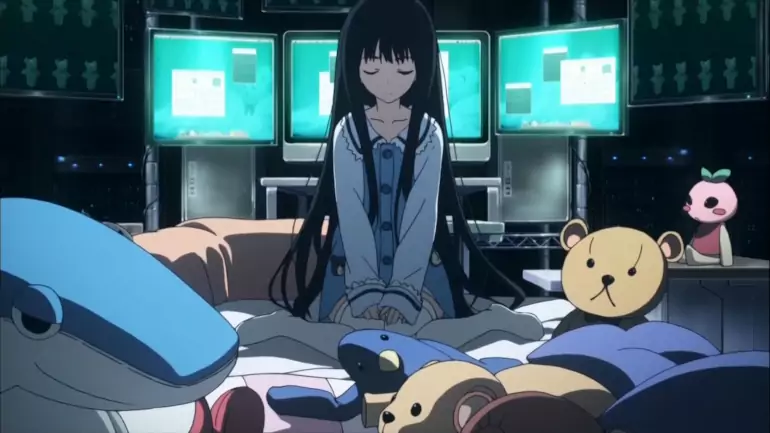Hikikomori Syndrome: Unraveling its Roots, Effects, and Therapies

Hikikomori Syndrome
This term describes teenagers or young adults who feel overwhelmed by the societal pressure in Japan, rendering them unable to meet their social obligations. In response, Hikikomori individuals choose to confine themselves to their rooms. Refusing to leave their parents' house, these youth may stay secluded in a small room for months or even years. It is estimated that approximately 1 million individuals identify as Hikikomori in Japan, with the majority being males, and a significant portion being firstborn sons.
Hikikomori Symptoms
Young individuals in Japanese society face immense pressure, stemming from various origins.
One key factor contributing to this behavior is their performance within the Japanese education system, where they grapple with significant expectations from both parents and society at large. In severe instances, symptoms may emerge even before entering school, during entrance exams, spanning from preschool to university. Many young individuals take a hiatus before exams to focus solely on the admission test. The more prestigious the school, the more arduous the exam, with the University of Tokyo currently holding the highest prestige in Japan.
Post-graduation from high school or university, they encounter demanding jobs, often within supermarkets, relying on part-time positions, ultimately settling for casual roles with meager income that does not suffice to establish a family legacy.
Another source of pressure comes from their peers, who influence them in various ways, including physical appearance, particularly if they are overweight, and mental and physical performance.
While many people feel the weight of the external world and experience discomfort in public, Hikikomori react by complete seclusion to avoid it. They commonly confine themselves to their rooms or other spaces for indefinite periods, sometimes lasting for years. Usually devoid of known friends, they sleep during the day and engage in activities like watching TV, playing, or using the computer at night.
These symptoms typically emerge gradually before a Hikikomori closes the door to their room. They may display signs of sadness, lose friends, become insecure, shy away, and speak less. School environments often contribute to their feeling of intimidation, serving as a pivotal factor in their ultimate withdrawal.
Parents' Response to Hikikomori Phenomenon
Dealing with a Hikikomori within the family is usually regarded as an internal and private matter, and many parents may take years before seeking psychological support. In Japan, the educational approach is highly traditional, often with the mother taking the lead, and fathers may delegate the Hikikomori issue to the mother, who tends to shield and protect the individual.
Initially, many parents adopt a passive approach, waiting for the situation to resolve itself, with the hope that the young person can eventually reintegrate into society. Conversely, some parents might feel uncertain about how to handle the situation and prefer to wait, exploring new options over time. Additionally, parents may resort to aggressive measures, compelling the young person to rejoin society without taking necessary precautions or allowing a specific period for readiness.
Effects on Hikikomori
The absence of social contact and prolonged isolation deeply affects the mental well-being of Hikikomori individuals. They may lose their capacity for social interaction and their moral compass. At times, distinguishing between right and wrong becomes a challenge, as the world observed through the TV and computer becomes their primary reference.
If the Hikikomori eventually re-emerges, possibly after several years, they confront the daunting task of having forfeited their social skills and missed crucial years of education. This complicates the process of reintegrating into society. The fear of others discovering their Hikikomori past looms large.
Additionally, there is the apprehension that societal pressure could escalate into anger, and the absence of a role model might trigger criminal behavior. In extreme cases, Hikikomori individuals may resort to violence, even targeting their parents. In 2000, a 17-year-old Hikikomori sabotaged a bus, resulting in the death of a passenger. In another distressing incident, a Hikikomori kidnapped a young girl, keeping her captive for nine years. Another tragic occurrence involved a young man murdering four girls to recreate scenes from his favorite Hentai Manga.
Hikikomori Treatment
Opinions on treating Hikikomori vary, with perspectives differing between Japanese and Western experts. Japanese experts lean towards waiting for Hikikomori to return voluntarily, while Western experts advocate for a more forceful reintegration into society. In either case, specialized psychological attention is imperative. Despite the availability of clinics and doctors specializing in Hikikomori treatment, many parents choose to keep it a secret, considering having a Hikikomori in the family a source of dishonor.
It is noteworthy that such cases are exceptionally rare in the Western context.
Si quieres conocer otros artículos parecidos a Hikikomori Syndrome: Unraveling its Roots, Effects, and Therapies puedes visitar la categoría Nippon.

Leave a Reply